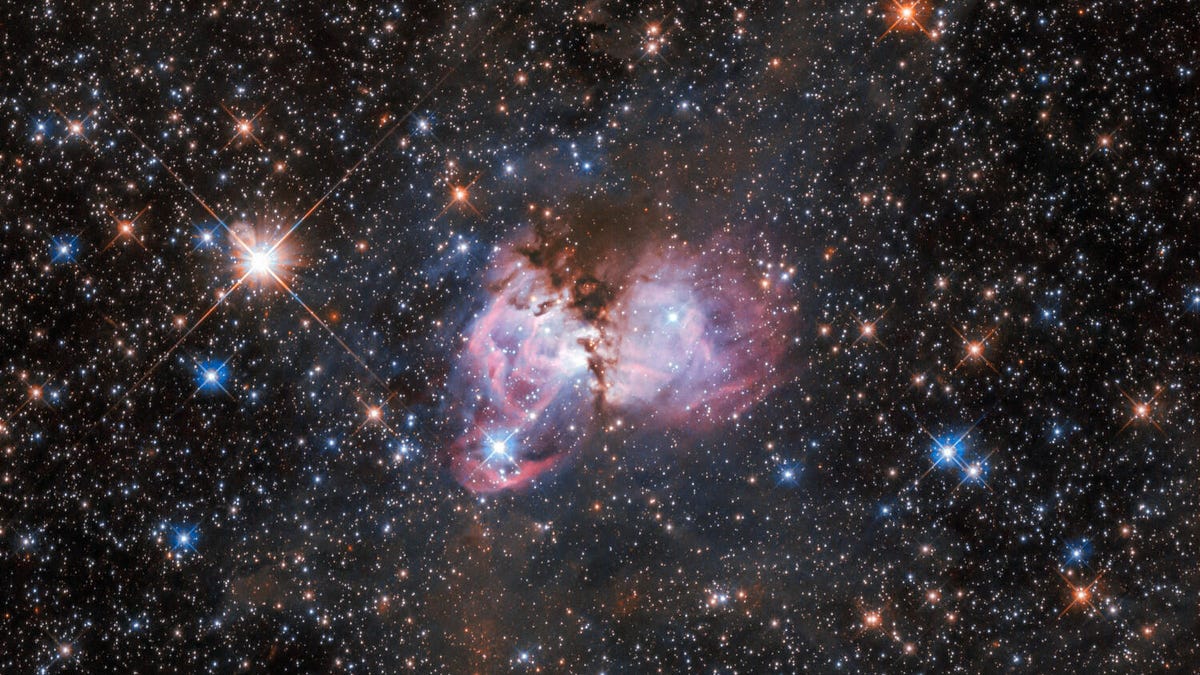Hubble telescope snaps dazzling pink cloud full of big baby stars
NASA and ESA's space telescope is eyeing a fascinating suburb of the Tarantula Nebula.

This pink cloud is known as LHA 120-N 150 and it's a birthplace for massive stars.
Say hello to the Hubble Space Telescope's view of LHA 120-N 150. It's a cloud of dust and gas surrounded by stars, and it calls the suburbs of the Tarantula Nebula its home. The nebula is known as a hot spot for star formation, and this particular region is helping astronomers learn more about how massive stars are created.
The cloud appears in pink in the processed image above (more on how Hubble colors come about). Young stars sparkle all around it. Hubble is a joint project between NASA and the European Space Agency.
Massive stars are exactly what they sound like: absolute stellar units. "Theoretical models of the formation of massive stars suggest that they should form within clusters of stars; but observations indicate that up to ten percent of them also formed in isolation," the ESA said in a release Wednesday.
Astronomers are trying to figure out if these isolated stars were born alone or if they just left home at an early age, and they're now scrutinizing LHA 120-N 150 to see if they can spot the difference between baby stars and dust clumps within the cloud.
"Only detailed analysis and observations will reveal their true nature and that will help to finally solve the unanswered question of the origin of massive stars," said ESA.
Since astronomers tend to nickname cosmic formations based on their resemblance to Earth objects, I'd suggest calling this the Cabbage Moth Cloud, thanks to its insectlike shape.

